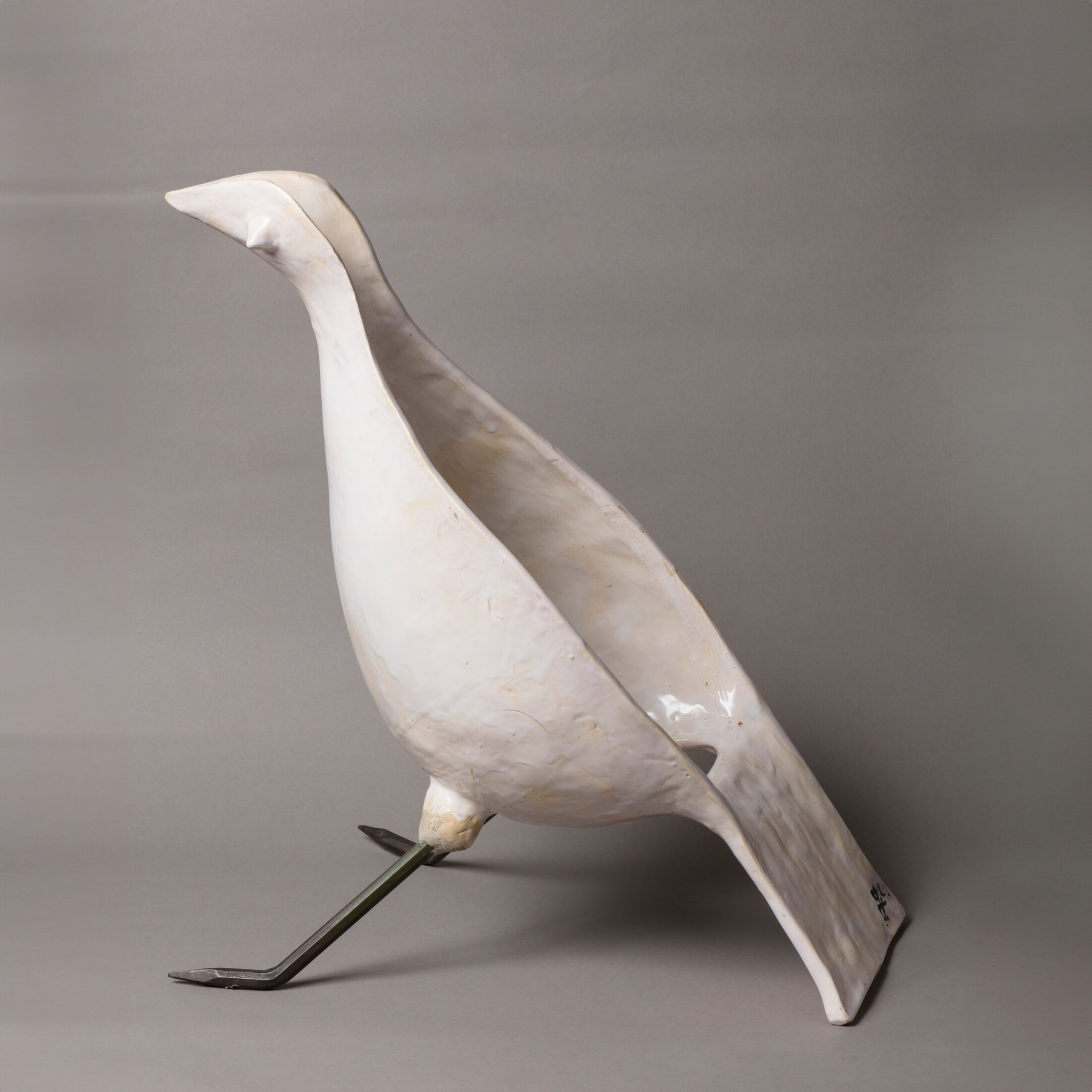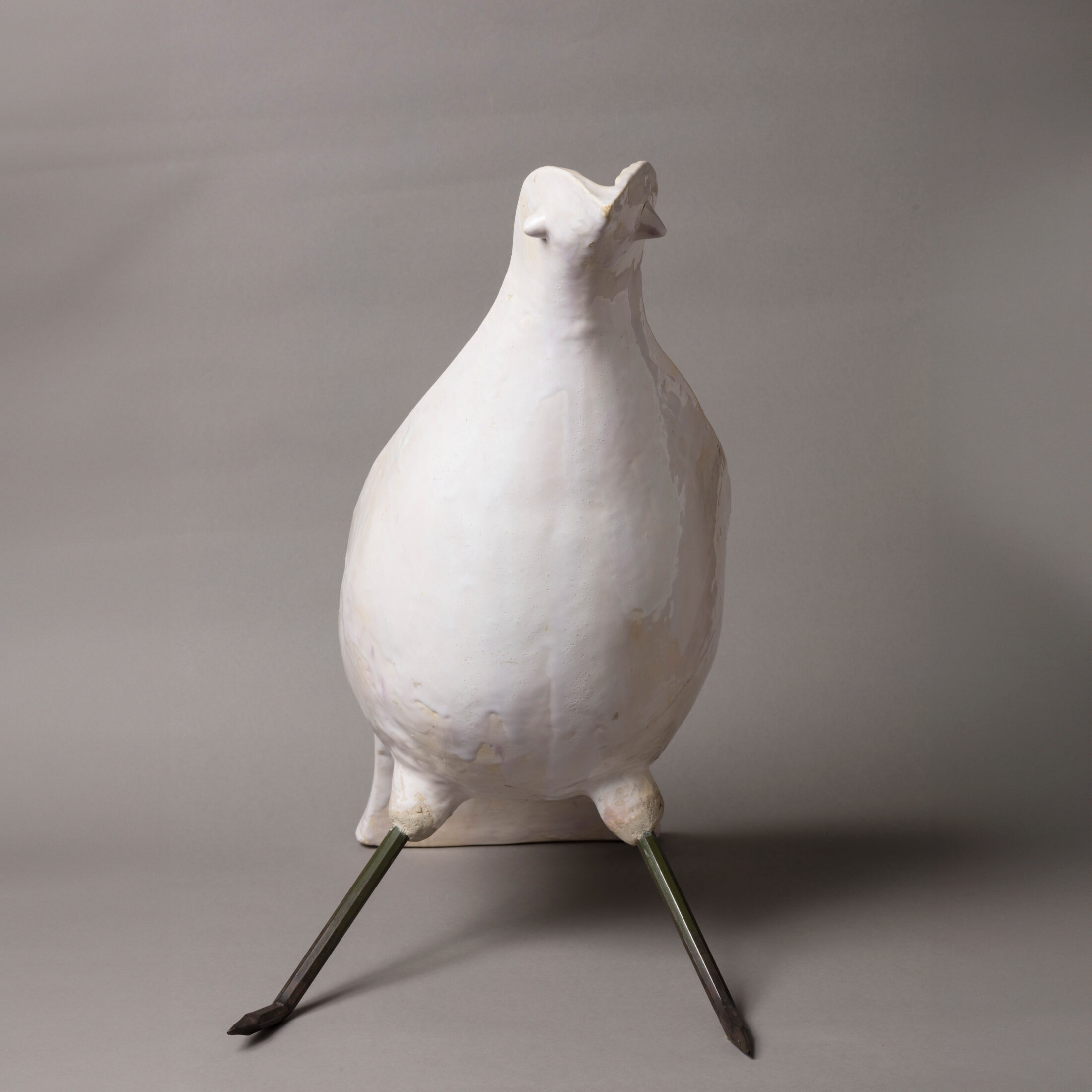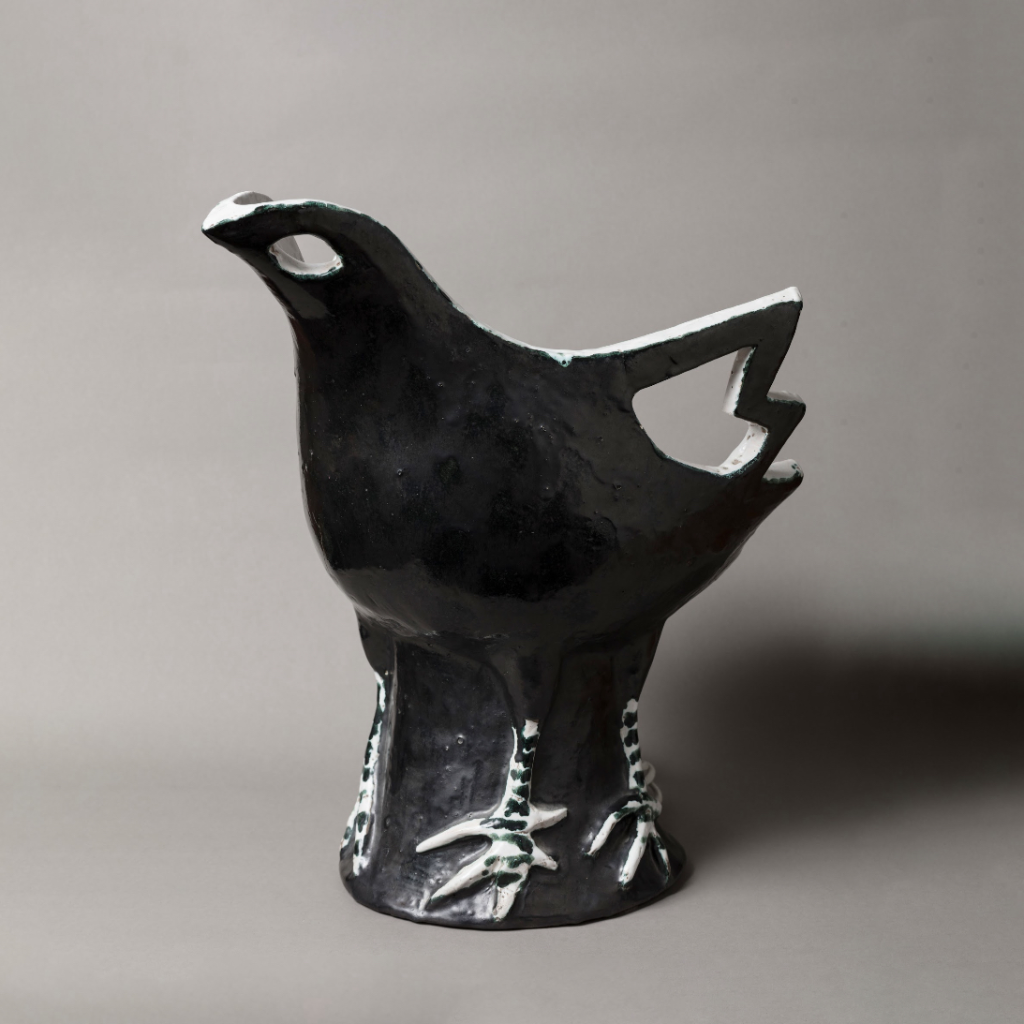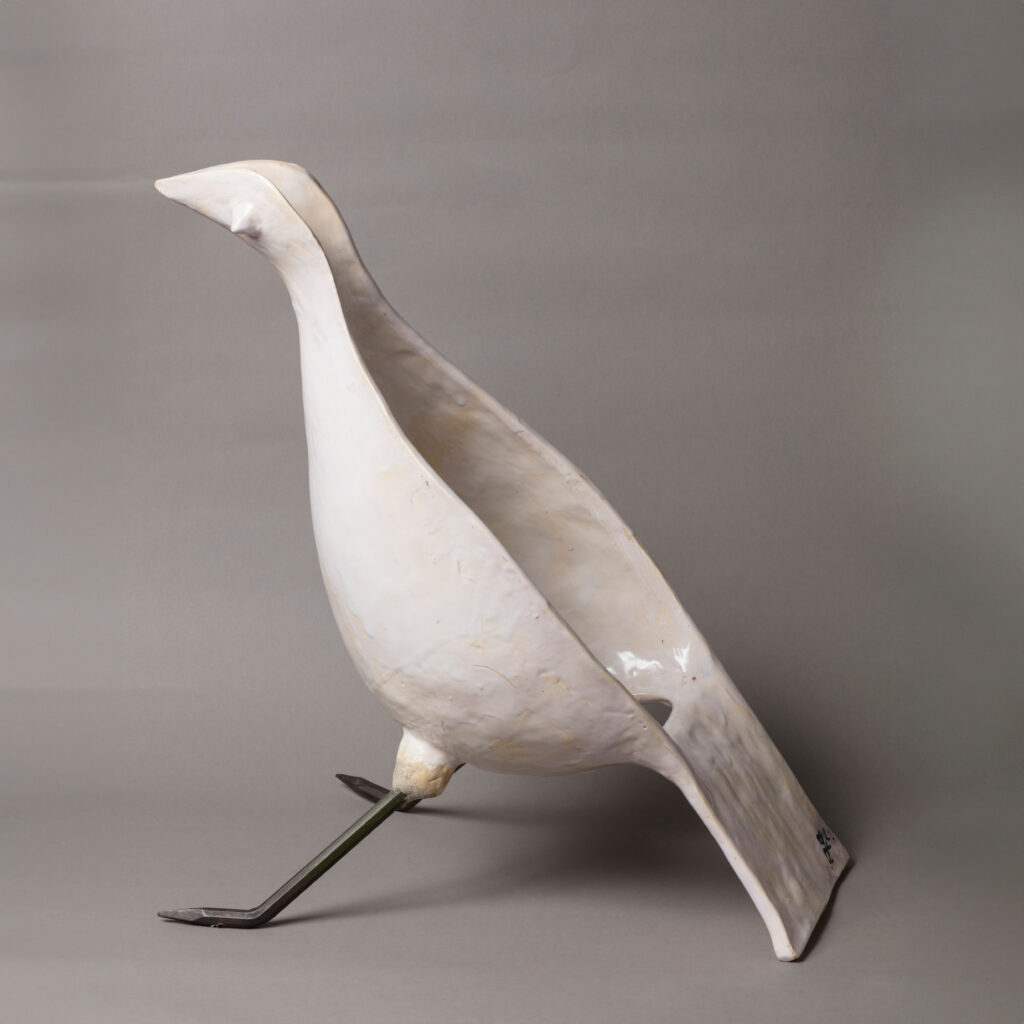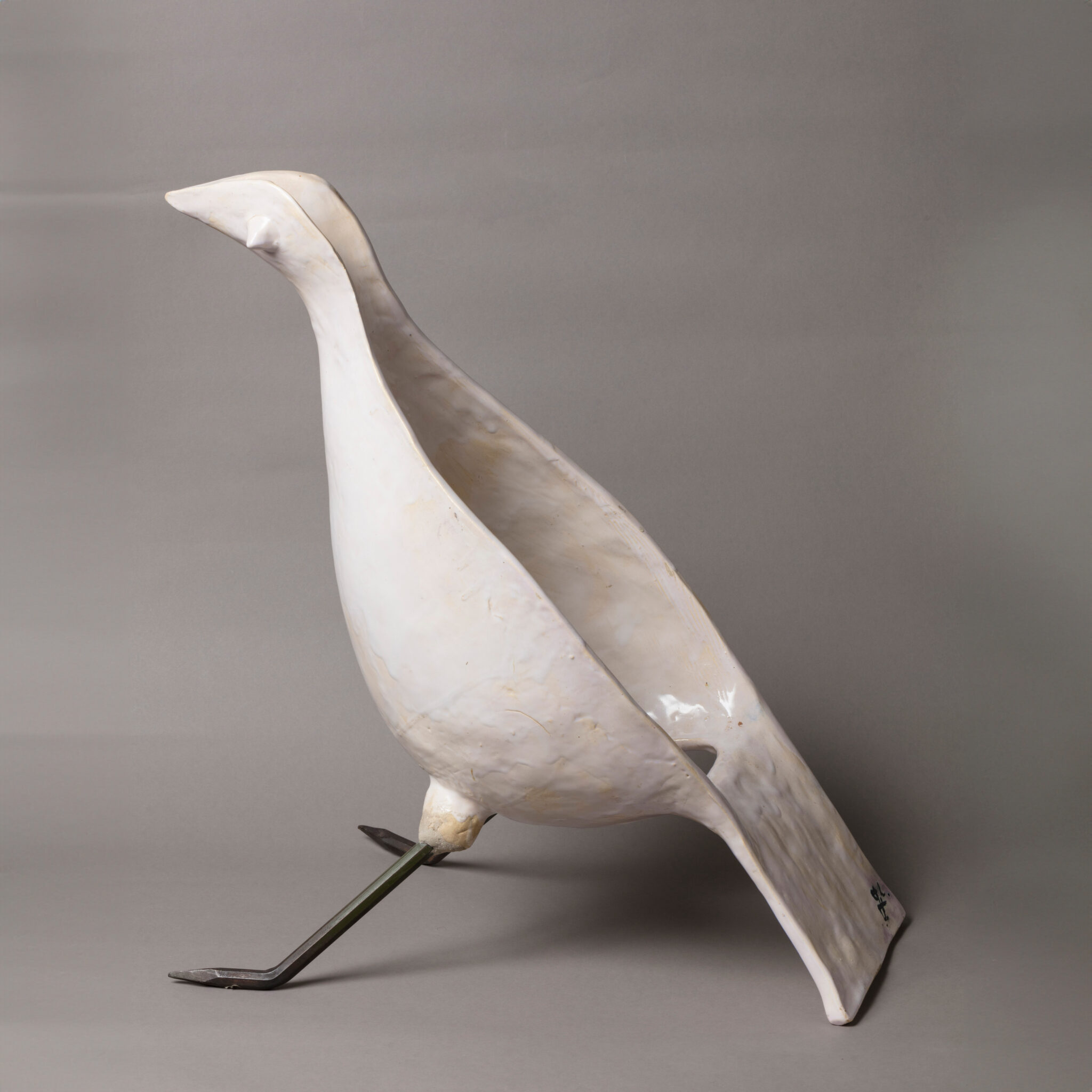


Illuminated hen -
1952
Enamelled ceramic, patinated metal Unique work
- H: 52 cm
- L: 44 cm
- P: 31 cm
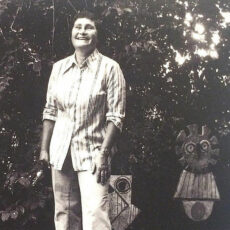
Trained in the decorative arts, Guidette Carbonell chose very early on to devote herself to ceramics, convinced that clay could be far more than a material destined for utilitarian craft. For her, ceramics was a language in its own right, capable of expressing a rich, abundant, and poetic imagination.
From the 1930s onward, Carbonell asserted an original artistic approach. She deliberately distanced herself from traditional objects to transform each creation into a work of art. Vases, plates, decorative panels, and sculptures became surfaces upon which she unfolded great formal freedom. She modeled clay with expressiveness, played with volume, and covered her pieces with colorful decorations evoking nature, myths, and stylized human or animal figures.
Like Picasso in Vallauris, she blurred the boundaries between so-called major arts and applied arts. Her approach sought to restore the artistic dignity of this ancestral medium by reinventing it through a modern language infused with poetry and imagination. Her immersion in ceramics was also a way of conceiving art as an accessible space, open to everyone. Carbonell rejected the idea of creation confined to museums or reserved for an elite. Her works express a longing for living art, close to people, rooted in matter and everyday life.
Though her work was sometimes overshadowed by painting and sculpture, it is today receiving renewed recognition. Her creations are held in numerous museums and collections and are being rediscovered as a key milestone in the renewal of 20th-century French ceramics.
Guidette Carbonell built a rich and multifaceted body of work, reflecting unceasing creativity and a meeting of archaism and modernity.
From the 1930s onward, Carbonell asserted an original artistic approach. She deliberately distanced herself from traditional objects to transform each creation into a work of art. Vases, plates, decorative panels, and sculptures became surfaces upon which she unfolded great formal freedom. She modeled clay with expressiveness, played with volume, and covered her pieces with colorful decorations evoking nature, myths, and stylized human or animal figures.
Like Picasso in Vallauris, she blurred the boundaries between so-called major arts and applied arts. Her approach sought to restore the artistic dignity of this ancestral medium by reinventing it through a modern language infused with poetry and imagination. Her immersion in ceramics was also a way of conceiving art as an accessible space, open to everyone. Carbonell rejected the idea of creation confined to museums or reserved for an elite. Her works express a longing for living art, close to people, rooted in matter and everyday life.
Though her work was sometimes overshadowed by painting and sculpture, it is today receiving renewed recognition. Her creations are held in numerous museums and collections and are being rediscovered as a key milestone in the renewal of 20th-century French ceramics.
Guidette Carbonell built a rich and multifaceted body of work, reflecting unceasing creativity and a meeting of archaism and modernity.
Works to discover
